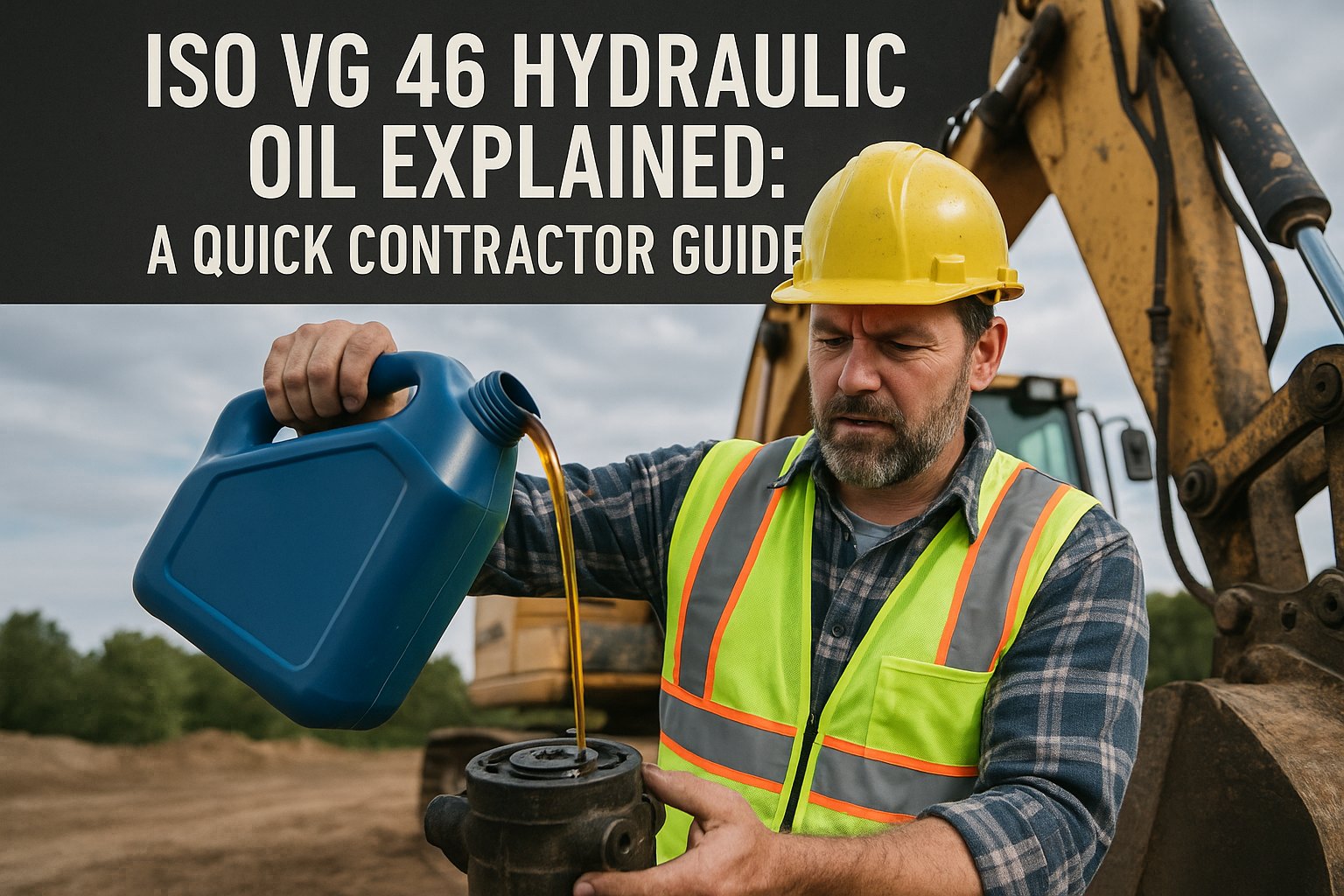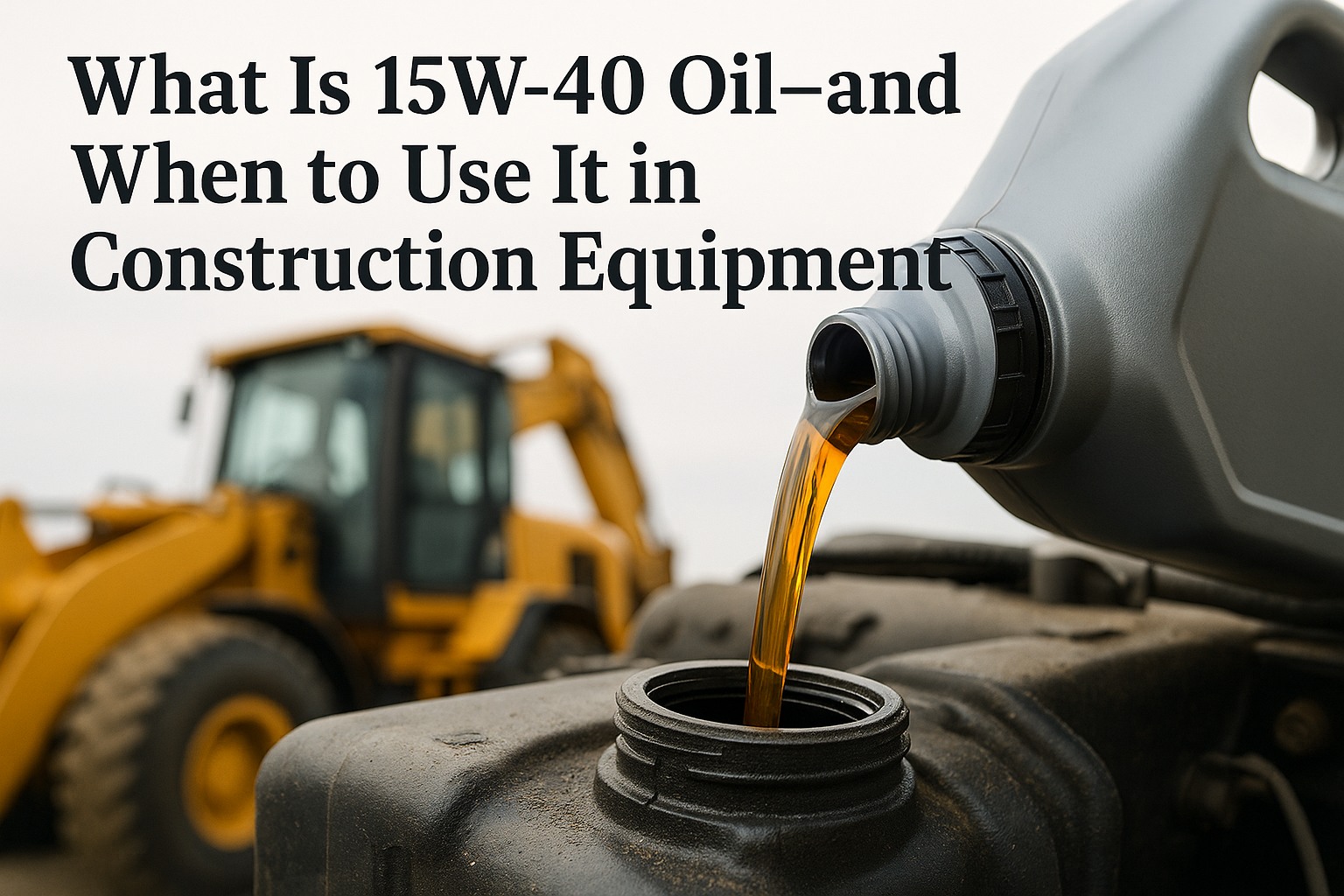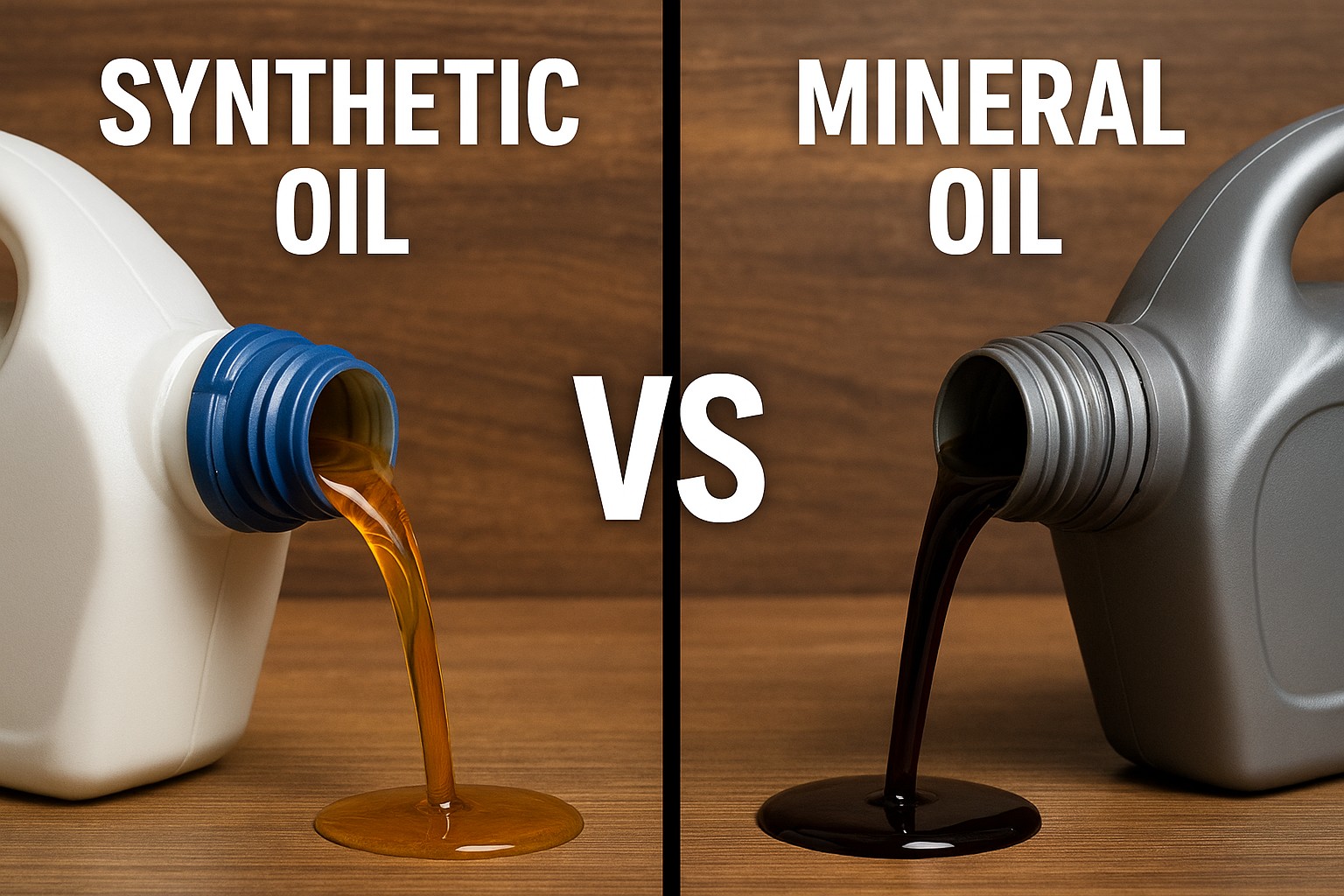DIY oil changes in construction equipment represent one of the most dangerous false economies in fleet management, with improper procedures causing an average of $125,000 in annual damage per 20-machine fleet. Industry analysis reveals that 78% of catastrophic engine failures originate from maintenance errors during oil changes, while 65% of equipment warranty claims are denied due to documented DIY maintenance mistakes. Professional oil change procedures reduce equipment failure rates by 85%, prevent $45,000 in average engine damage per incident, and maintain warranty protection worth $25,000-$75,000 per machine while ensuring operational safety and regulatory compliance across demanding construction environments.
The Hidden Crisis: Catastrophic Risks of DIY Oil Changes
Modern construction equipment demands precision maintenance procedures that DIY approaches fundamentally cannot deliver, creating cascading failure risks that extend far beyond simple mechanical issues. DIY oil change disasters manifest through multiple failure modes that compound exponentially, transforming routine maintenance into equipment-destroying events with legal, financial, and operational consequences.
Catastrophic Drain Plug Failures
Improper torque specifications cause 45% of DIY-related engine failures, with over-tightened plugs stripping threads and under-tightened plugs causing sudden oil loss resulting in $85,000+ engine replacements.
Filter Installation Disasters
Double-gasketed filters and improper seating create explosive oil loss scenarios, with 35% of DIY changes resulting in filter failures causing immediate engine damage within 50 operating hours.
Contamination Introduction
Dirty tools, improper procedures, and environmental exposure introduce contaminants that accelerate wear by 300%, reducing engine life from 15,000 to 5,000 hours with repair costs exceeding $125,000.
Wrong Oil Specification
Incorrect oil selection occurs in 55% of DIY changes, causing immediate lubrication failure, warranty voidance, and catastrophic damage requiring complete engine rebuilds costing $75,000-$150,000.
Environmental Violations
Improper disposal and spill management trigger EPA fines averaging $35,000 per incident, with repeat violations escalating to $250,000 and potential criminal charges for company officers.
Safety Incident Exposure
DIY procedures cause 125 serious injuries annually, with hot oil burns, crushing incidents, and chemical exposure creating $45,000+ liability claims and OSHA violations.
The Financial Devastation of Amateur Maintenance
Before implementing professional maintenance protocols, construction fleet operations experience devastating financial impacts from DIY oil change attempts that extend far beyond immediate repair costs:
- Warranty voidance exposure eliminating $25,000-$75,000 protection per machine due to documented improper maintenance
- Insurance claim denials for equipment damage when DIY maintenance is discovered, creating unrecoverable losses
- Cascade failure scenarios where initial oil-related damage triggers multiple system failures costing $150,000+
- Environmental cleanup costs from spills and improper disposal averaging $45,000 per incident
- Legal liability exposure from injuries, environmental damage, and regulatory violations exceeding $250,000
Protect your fleet investments with professional maintenance management systems
Getting Started Book a DemoFoundation Elements: Critical Failure Points in DIY Oil Changes
Professional maintenance analysis reveals systematic failure patterns in DIY oil changes that create compound risks extending far beyond simple procedural errors, encompassing equipment damage, environmental hazards, and legal liabilities that threaten entire business operations.
Technical Failure Mechanisms and Risk Multiplication
Comprehensive failure analysis demonstrates how minor DIY errors cascade into catastrophic equipment failures through interconnected system dependencies and accelerating damage mechanisms.
Torque Specification Failures
Drain plugs require precise 25-35 ft-lb torque specifications that DIY attempts routinely violate, causing thread damage, oil pan cracking, and sudden catastrophic oil loss during operation.
Filter Media Contamination
Improper handling introduces debris into filter housings, bypassing filtration systems and circulating contaminants that cause accelerated wear, scoring, and bearing failure within 100 hours.
Seal and Gasket Damage
Reused or improperly installed seals create progressive leaks that worsen under pressure, leading to environmental violations, fire hazards, and complete lubrication system failure.
Fill Level Miscalculation
Over-filling causes aeration and cavitation destroying hydraulic systems, while under-filling creates immediate bearing starvation and connecting rod failure costing $65,000+.
Advanced Risk Analysis: Hidden Dangers of Amateur Maintenance
Environmental and Regulatory Compliance Failures
DIY oil change procedures create systematic regulatory violations that expose companies to escalating fines, criminal prosecution, and operational shutdowns through inadequate environmental controls and documentation failures.
Spill Containment Failures
DIY procedures lack proper containment systems, creating ground contamination that triggers environmental remediation requirements costing $75,000-$150,000 per incident.
Disposal Violations
Improper oil disposal methods violate Resource Conservation and Recovery Act requirements, triggering federal investigations and fines starting at $37,500 per day.
Documentation Deficiencies
Inadequate maintenance records fail EPA audit requirements, creating presumption of violations and shifting burden of proof to operators facing regulatory enforcement.
Stormwater Contamination
Oil residue from DIY changes contaminates stormwater systems, violating Clean Water Act provisions with penalties reaching $250,000 and mandatory remediation.
Implementation Methodology: Professional Oil Change Protocols
Systematic Approach to Risk Elimination
Professional maintenance implementation requires comprehensive protocols that address technical procedures, environmental compliance, quality control, and documentation requirements while eliminating DIY-associated risks across all operational aspects.
Phase 1: Initial Assessment
Evaluate current DIY practices, identify risk exposure, calculate liability costs, and develop transition plan to professional maintenance with $15,000-$25,000 initial investment for 20-machine fleet.
Phase 2: System Development
Establish certified technician network, implement quality control procedures, deploy tracking systems, and create compliance documentation framework with $35,000 technology investment.
Phase 3: Training Integration
Develop 40-hour certification program covering procedures, environmental compliance, safety protocols, and quality standards with ongoing competency verification and updates.
Phase 4: Compliance Validation
Implement audit procedures, environmental monitoring, documentation review, and continuous improvement systems ensuring 100% regulatory compliance and risk mitigation.
Quality Control Systems and Verification Protocols
Professional maintenance quality systems eliminate risks of changing oil yourself through multi-layer verification procedures, certified technician requirements, and systematic documentation that ensure consistent excellence.
Technician Certification Requirements
Mandatory ASE certification, manufacturer-specific training, environmental compliance qualification, and annual recertification ensuring technical competency and regulatory knowledge.
Multi-Point Inspection Protocols
27-point inspection checklist, photographic documentation, digital verification systems, and supervisor approval requirements preventing errors and ensuring completeness.
Environmental Protection Systems
Containment barriers, spill response equipment, waste tracking manifests, and disposal certification ensuring 100% regulatory compliance and environmental protection.
Documentation Management Framework
Digital maintenance records, warranty protection documentation, compliance certificates, and audit trail systems providing legal protection and operational insights.
Analytics and Performance Monitoring: Quantifying DIY Risk Exposure
Comprehensive Risk Assessment and Cost Analysis
Data-driven analysis reveals the true cost of DIY oil changes extends far beyond visible maintenance expenses to encompass hidden liabilities, accelerated depreciation, and opportunity costs that devastate profitability.
Direct Cost Analysis
Equipment damage averaging $65,000 per incident, warranty voidance worth $45,000 per machine, and parts replacement costs exceeding professional service by 300%.
Indirect Cost Evaluation
Downtime losses of $5,000 daily, project delays triggering $25,000 penalties, and reputation damage affecting $500,000+ in future contracts.
Liability Exposure Assessment
Environmental fines averaging $45,000, injury claims reaching $125,000, and legal defense costs of $75,000 per incident creating unbounded risk exposure.
Opportunity Cost Calculation
Management time diverted to damage control, lost productivity from equipment failures, and competitive disadvantage from unreliable operations costing $200,000 annually.
ROI and Operational Excellence: Professional Maintenance Advantages
Quantifiable Benefits of Eliminating DIY Practices
Professional oil change protocols deliver measurable returns through multiple value streams that compound over equipment lifecycles, transforming maintenance from cost center to profit protection mechanism.
Operational Excellence Through Professional Standards
Systematic professional maintenance creates operational advantages that extend beyond risk mitigation to enhance competitive positioning, customer confidence, and sustainable profitability.
- Equipment reliability improvement achieving 95%+ uptime compared to 75% with DIY maintenance approaches
- Warranty preservation maintaining full manufacturer coverage worth $25,000-$75,000 per machine
- Insurance premium reductions of 15-25% through documented professional maintenance programs
- Regulatory compliance assurance eliminating violation risks and associated penalties
- Enhanced resale values with professional maintenance records increasing values by 20-30%
Compliance and Regulatory Alignment: Legal Requirements and Liabilities
Regulatory frameworks governing equipment maintenance create strict liability for DIY practices, with enforcement agencies increasingly targeting improper maintenance as source of environmental violations and safety incidents.
EPA Environmental Requirements
Resource Conservation and Recovery Act mandates proper oil handling, storage, and disposal with violations triggering $37,500 daily fines and potential criminal prosecution for willful violations.
OSHA Safety Standards
Occupational safety regulations require proper training, equipment, and procedures for maintenance activities with violations causing $13,653 per incident fines and increased scrutiny.
DOT Transportation Rules
Commercial vehicle maintenance standards prohibit unqualified maintenance with violations creating out-of-service orders, $25,000 fines, and carrier safety rating impacts.
State Environmental Laws
State-specific regulations often exceed federal requirements with additional reporting, permitting, and operational standards creating cumulative compliance obligations.
Future Outlook: Evolution of Maintenance Standards and Technologies
The maintenance landscape continues evolving with emerging technologies and tightening regulations that make DIY approaches increasingly obsolete and legally problematic for construction operations.
Predictive Maintenance Integration
AI-powered oil analysis systems detecting contamination patterns and wear indicators requiring professional interpretation and response beyond DIY capabilities.
Regulatory Technology Requirements
Electronic logging mandates, real-time emission monitoring, and automated compliance reporting creating technical barriers to amateur maintenance.
Manufacturer Connectivity Standards
Telematics integration, remote diagnostics, and warranty validation systems requiring certified technician access and professional service documentation.
Environmental Tracking Systems
Blockchain-based waste tracking, automated spill reporting, and regulatory integration mandating professional handling and certified disposal chains.
Frequently Asked Questions
Eliminate DIY maintenance risks with professional fleet management systems
Getting Started Book a Demo



